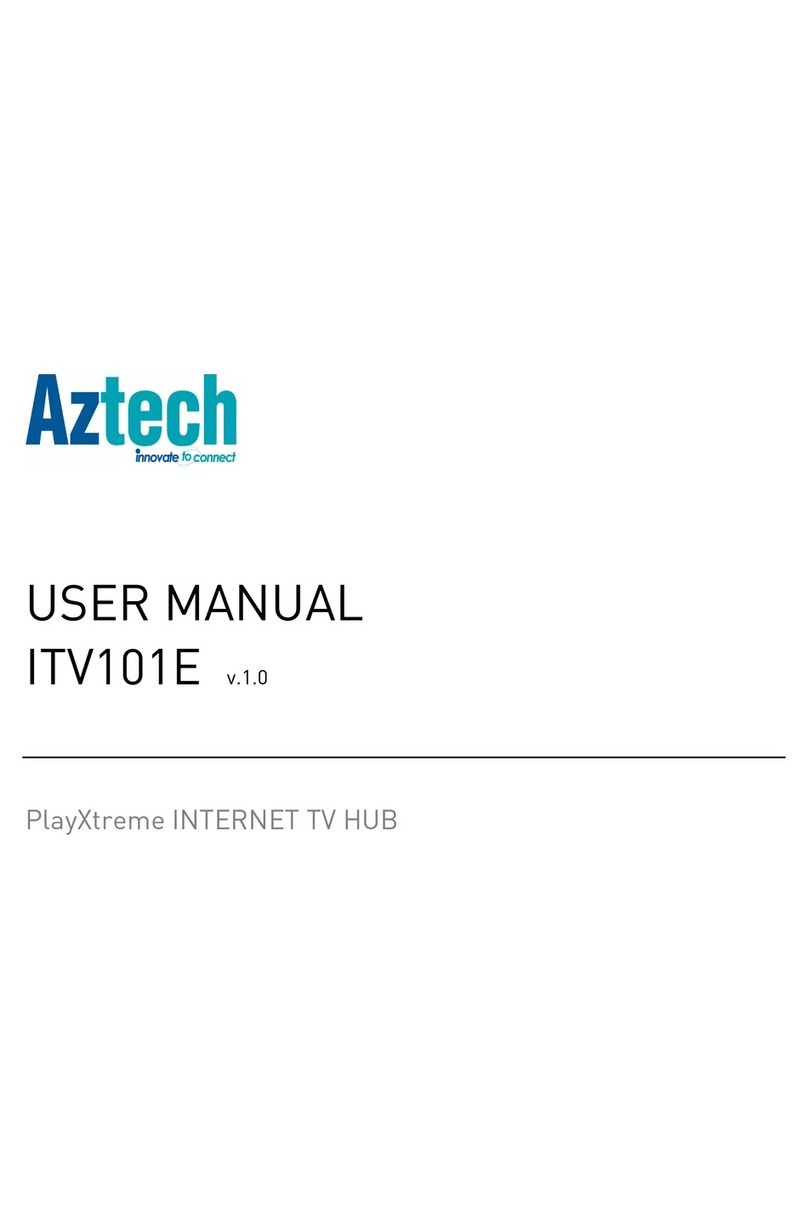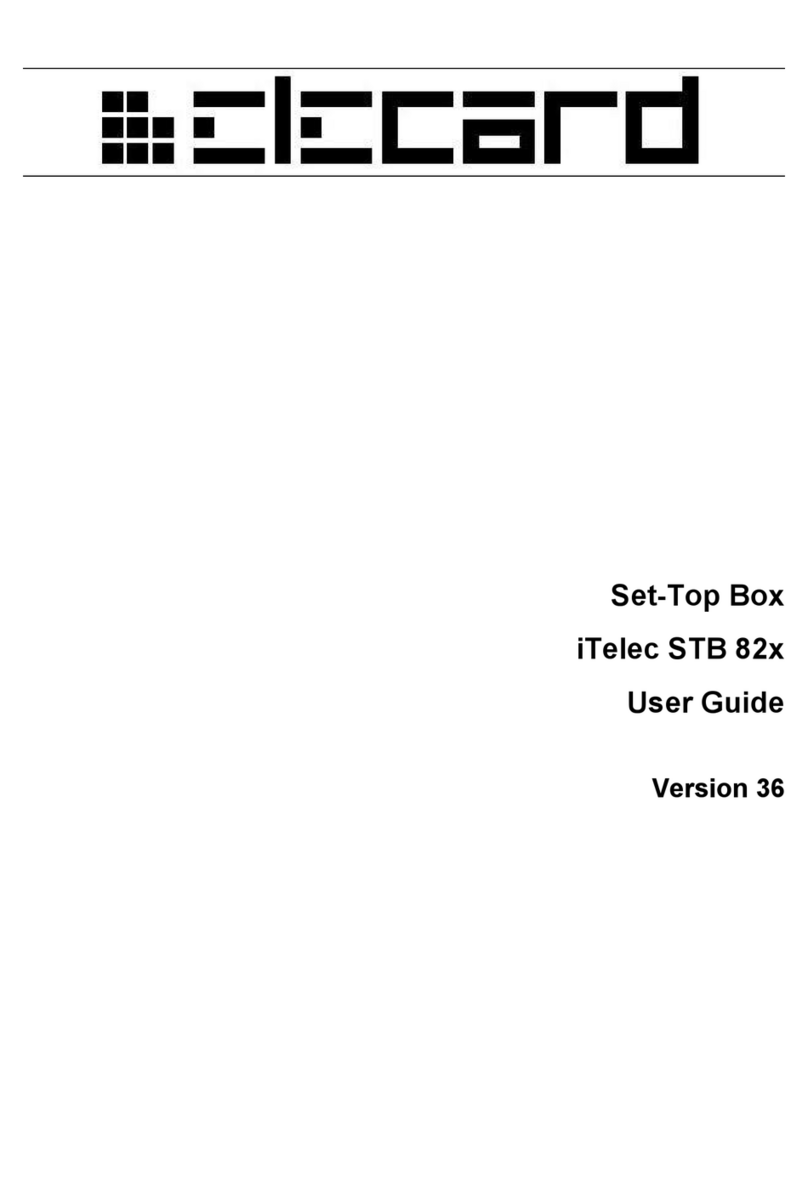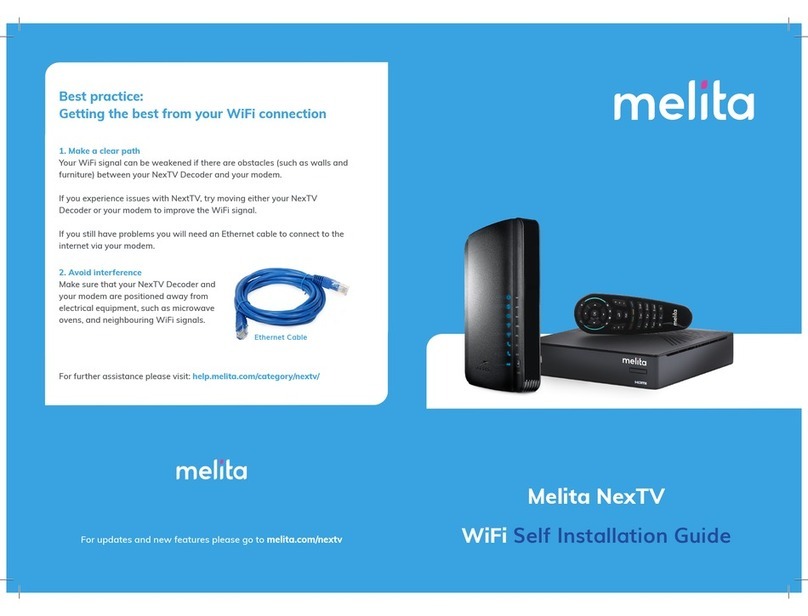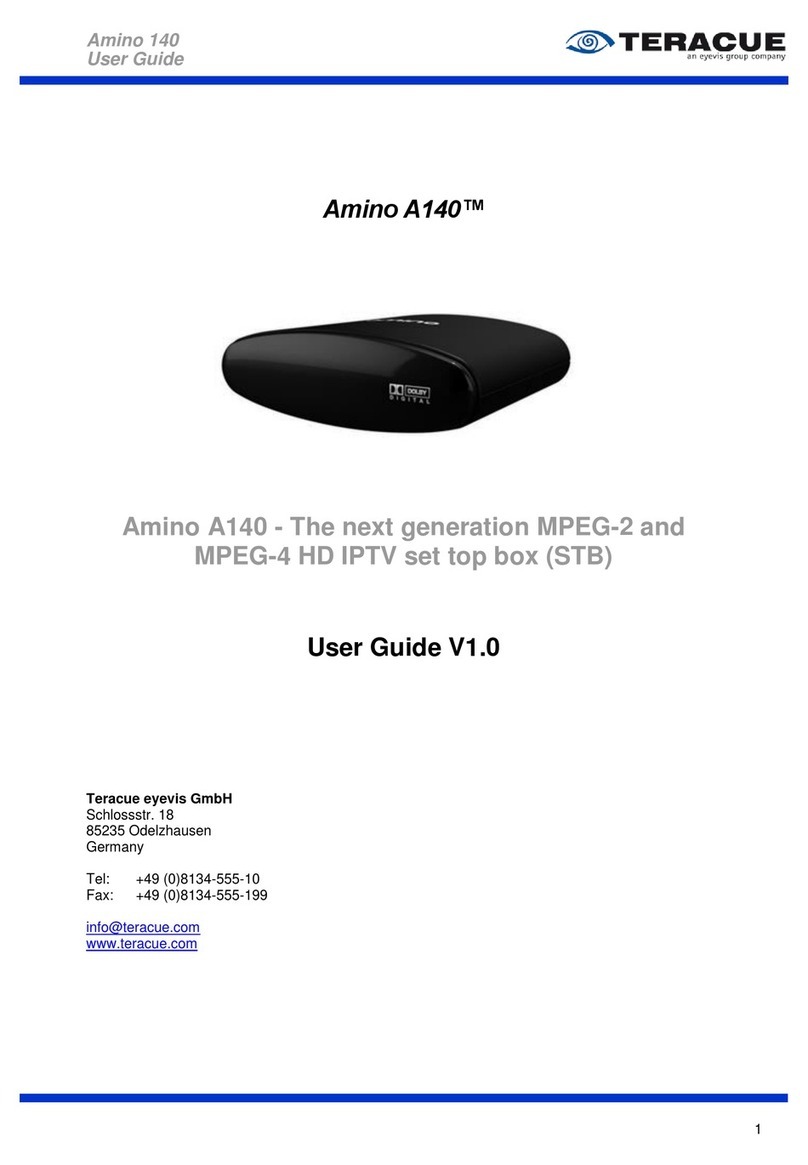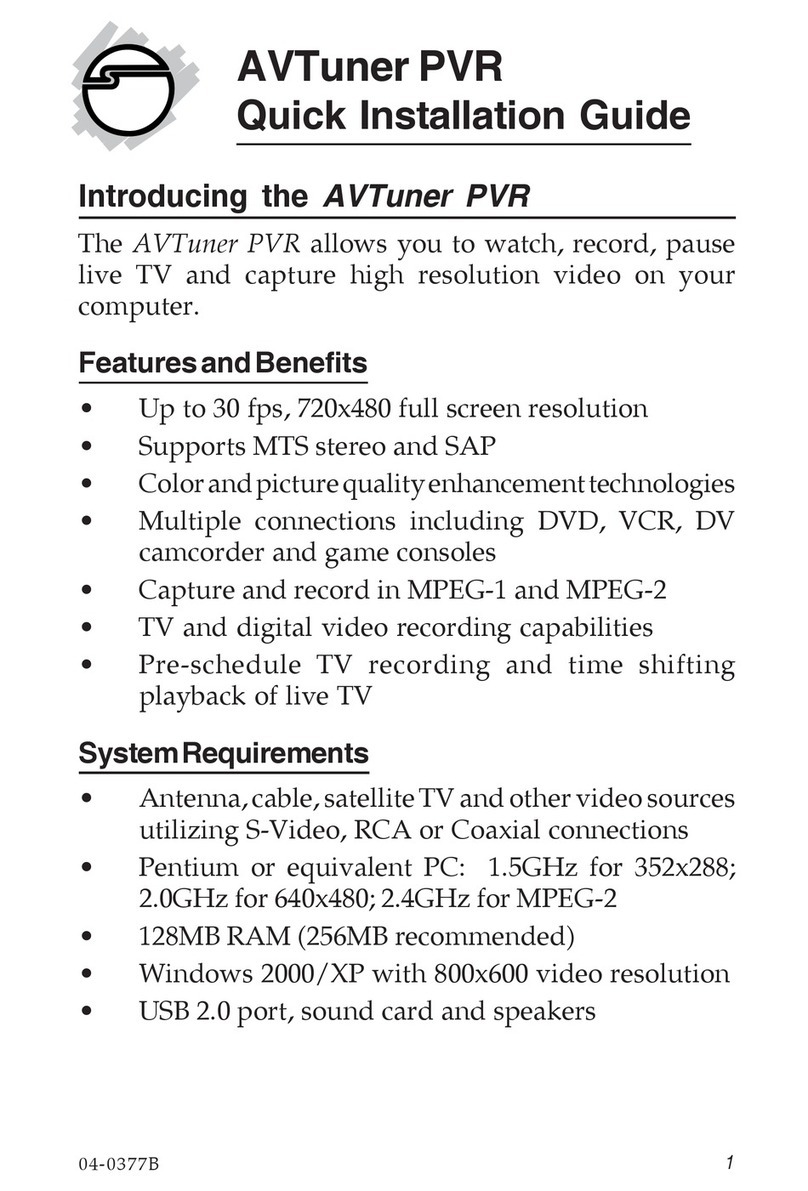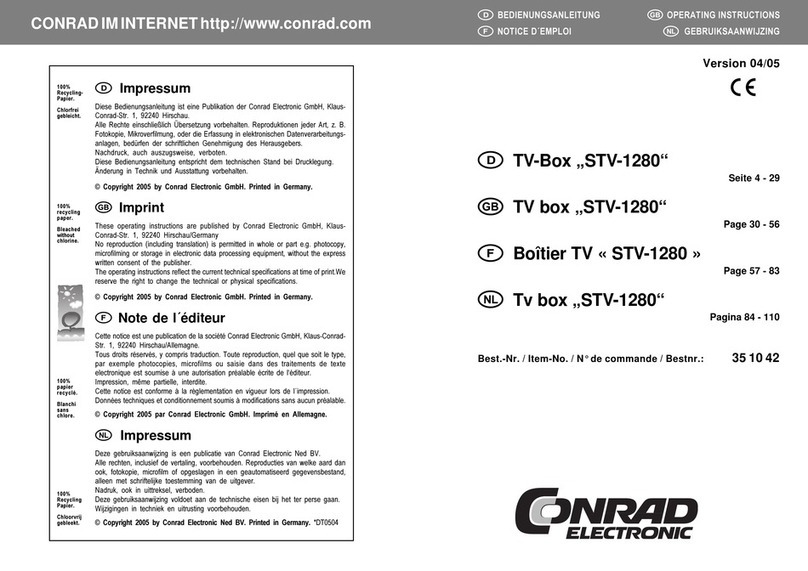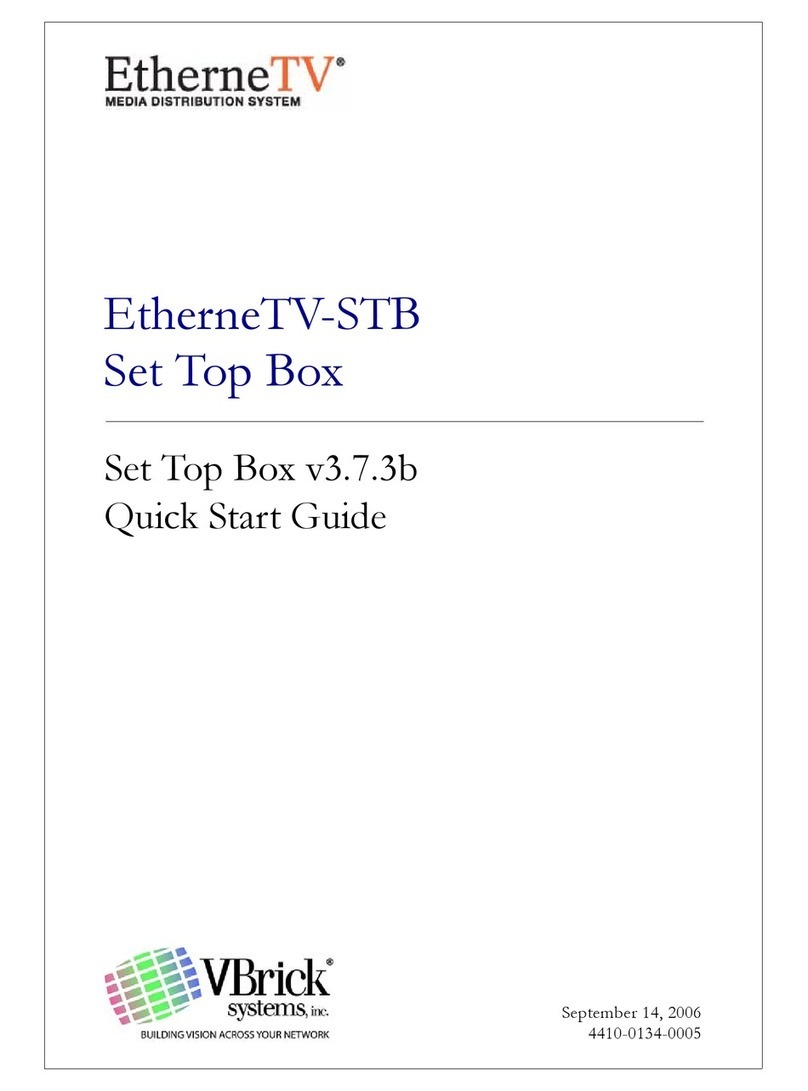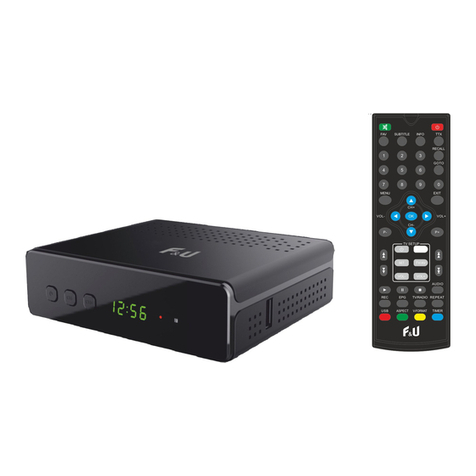Gi PROOVE it User manual

GERMANN INSTRUMENTS, Inc.
8845 Forest View Road,
Evanston, Illinois 60203. USA
Phone: (847)329-9999
germann@germann.org
Web-site: www.germann.org
For:
ASTM C 1202
AASHTO T 277-832
ASTM C 1760
NT BUILD 492
& French Standards XP P 18-461 or XP P 18-462
Germann Instruments, Inc.
Test Smart –Build Right
GERMANN INSTRUMENTS, A/S
Emdrupvej 102
DK-2400, Copenhagen NV. Denmark.
Phone: (+45) 39 67 71 17
germann-eu@germann.org
Web-site: www.germann.org
User Manual –v4.0

1
©
Germann Instruments, Inc.
Test Smart –Build Right
©
Limited Warranty
Germann Instruments warrants the Product against defects in materials and workmanship under normal
use for a period of 12 months from the Delivery Date. This Warranty does not apply to: (1) any
consumable parts, such as batteries and cables, unless there is evident defect in materials or
workmanship; (2) cosmetic damage, such as scratches, dents, spots, stains, etc.; (3) damage caused by
failure to follow instructions to use it properly, accident, abuse, misuse, neglect or failure to properly
maintain (to include but not limited to water damage and/or condensation or improper temperatures
during storage), or improper installation; (4) damage caused by electrical disturbances or acts of God,
such as civil disturbance, war, flood, fire, rodents or insects; (5) where manufacturer’s serial numbers and
security labels have been removed from the Product; and (6) damage caused during shipment (due to
Customer’s improper packaging) from Customer to Germann Instruments in the case of Product returns
for repair. Germann Instruments disclaims all other warranties, express or implied, including without
limitation implied warranties of merchantability, fitness for a particular purpose, or against hidden or
latent defects. Germann Instruments’ responsibility for warranty claims is limited to repair or
replacement. Germann Instruments reserves the right to modify this Warranty at any time, at its sole
discretion. Germann Instruments does not warrant that the operation of the Product will be
uninterrupted or error-free. This Warranty is voided immediately if repair, modification (including
upgrades, expansions or usage or addition of non-manufacturer parts or accessories), alteration or other
service is attempted other than by Germann Instruments.
Copyright
Germann Instruments has paid special attention to making this manual a valuable document. However,
we give no warranties that all errors have been eliminated from the manual, or from the hardware or
software to which it relates. The hardware and the software are continuously in a process of
development; therefore, the information in this document is subject to change without notice. All
copyright and reproductions are reserved concerning the hardware and the software. No part of this
manual may be reproduced by print, photocopy or any other means without written permission from
Germann Instruments. To receive the full benefit of the test system it is recommended to go through a
training course organized by Germann Instruments. Workshops are normally programmed and carried
out in a regular basis. Contact us for more information or visit our website www.german.org
Disclaimer
Germann Instruments makes no warranty, representation or guarantee regarding the suitability of the
results obtained by the use of this equipment or any of the items included, for any particular purpose, nor
does Germann Instruments assume any liability arising out of the use or application of any Germann
Instruments product. Germann Instruments specifically disclaims any and all liability, including without
limitation incidental or consequential damages. Germann Instruments and its suppliers hold no
responsibility for damage to health or life, damage expenses, lost profits, or any other claims arising from
the use of its products. Any customer purchasing or using Germann Instruments product(s) shall
indemnify and hold Germann Instruments and its officers, employees, related companies, affiliates and
distributors harmless against all costs, damages, expenses, personal injury or death, and legal fees arising
out of, directly or indirectly, any claim associated with the use of a product, even if such claim alleges that
Germann Instruments was negligent regarding the design or manufacture of the relevant product(s). This
manual does not address all of the safety concerns, if any, associated with the use of the test system. It is
the responsibility of the user of the equipment to establish appropriate safety and health practices and
determine the applicability of regulatory limitations prior to use.

2
©
Germann Instruments, Inc.
Test Smart –Build Right
©
Contenido
1 Introduction 3
1.1 Proove’it© Classic 3
1.2 Proove’it Cell 3
1.3 ASTM C 1202 using the Proove´it Cell PR-1000 (See figure 3.a) 5
1.4 ASTM C 1760 using the Proove´it Cell PR-1200 (See figure 3.b) 6
1.5 NT BUILD 492 using the Proove´it Cell PR-1100 (See figure 3.c) 8
2 Parts List 9
3 Preparing and producing the specimens 10
4 Conditioning the specimens 11
5 Choosing the correct rubber gasket 12
6 Installing the gaskets without epoxy 13
7 Installing the gaskets with epoxy 15
8 Connecting the cells to the Proove’it©Microprocessor Power Supply unit 15
9 Installing the Proove’it©Software (ProovePC v4.0) 16
10 Turning on and running the system 16
10.1 Running the test for ASTM C 1202 and NT BUILD 492 18
10.2 Running the test for ASTM C 1760 27
11 Turning off the system 32
12 Disassembling a Proove’it© cell and maintenance 32
13 Verification of the Proove’it©Unit 33
14 Remarks on proper operation of the Proove’it©Unit 34
15 Maintenance of the vacuum pump 35
16 References 36
The PROOVE´it system is the sole property of GERMANN INSTRUMENTS A/S, Denmark
Copyright ©, All Rights Reserved.
Reproduction in any manner without the permission of GERMANN INSTRUMENTS A/S is strictly forbidden.

3
©
Germann Instruments, Inc.
Test Smart –Build Right
©
1. Introduction
1.1 Proove’it© Classic
The Proove’it©Classic Microprocessor Power Supply Unit is capable to perform testing with up to 8
channels simultaneously at one set voltage (See figure 1). The voltage range is 0 to 60 V, adjustable in 5 V
steps. Therefore, the Proove’it Classic can be used for testing in accordance with:
-ASTM C 1202 “Standard Test Method for Electrical Indication of Concretes Ability to Resist
Chloride Ion Penetration” (so called The Rapid Chloride Permeability Test or RCPT).
-ASTM C 1760 “Standard Test Method for Bulk Electrical Conductivity of Hardened Concrete”.
-NT BUILD 492 “Nordtest Method for concrete, mortar and cement-based repair materials:
Chloride Migration Coefficient from Non-Steady State Migration Experiments”.
-XP P 18-462 “Accelerated Migration Test of Chloride Ions under Non-Steady State”.
-XP P 18-461 “Accelerated Migration Test of Chloride Ions under Stationary State”.
The software and all testing cells are compatible with the microprocessor power supply unit.
Figure 1 The PR-1050 Proove´it Classic for up to 8 cells.
1.2 Proove’it Cell
The cell is the accessory that holds the concrete specimen, the NaCL and the NaOH solutions in order to
perform the test (See figure 2).
The standard cell might have some variations depending on the test standard to be run, such as: ASTM
C1202, ASTM C1760, NT Build 492, etc. (See figure 3).

4
©
Germann Instruments, Inc.
Test Smart –Build Right
©
Figure 2 The schematic of a standard Proove´it cell.
7. Red banana jack.
8. Black banana jack.
9. Sealing gasket.
10. Wire mesh.
11. Spacer.
12. Concrete specimen.
1. Reservoir for NaCl solution.
2. Reservoir for NaOH solution.
3. Solution filling inlet.
4. Solution filling inlet.
5. Steel bolt.
6. Washer and nut.

5
©
Germann Instruments, Inc.
Test Smart –Build Right
©
Figure 3 The Proove´it testing cells.
1.3 ASTM C 1202 using the Proove´it Cell PR-1000 (See figure 3.a)
The Proove’it©equipment is designed to perform a rapid and automated electrical indication of the
concrete’s ability to resist chloride ion penetration in accordance with the ASTM C 1202-12 [1] or AASHTO
T 277-831 [2]. The unit measures the electrical current passing through a concrete specimen for a period of
standard 6 hours at a standard voltage of 60 V-DC.
The current (in milliamps) is measured over 6 hours and the ampere-seconds are achieved by integration
of the curve in order to obtain the Coulombs. This is done automatically. The Coulombs are, according to
ASTM C 1202, an indication of the concrete’s ability to resist chloride ion penetration for a specimen with
a diameter of 95 mm (3 ¾”), 50 mm long (See table 1).
Table 1 Chloride ion penetrability based on charge passed [1].
Coulombs
Chloride Ion
Permeability
Typical of
>4000
4000-2000
2000-1000
1000-100
<100
High
High w/c ratio
Moderate
0.4 - 0.5 w/c ratio
Low
w/c ratio < 0.4
Very low
Latex modified concrete
Negligible
Polymer modified concrete
(a) The standard PR-1000 cell for ASTM C 1202.
(b) The PR-1200 cell for ASTM C 1760.
(c) The PR-1100 cell with cooling ribs for NT BUILD 492, and RCPT with optional heat reduction.
(d) The PR-1000-113-20 modified for the French standard XP P 18-461 for 113 mm diameter and
20 mm thick specimens (cooling ribs can also be mounted here).
NOTE: For stabilization of the temperature of the liquids, the PR-1100 cell with cooling ribs has to be
used. A fan can be positioned in the vicinity of the ribs. Should the temperature measured in the
liquids start rising above a required temperature level, the fan is turned on to enhance the airflow
around the cooling ribs to release the heat from the cells.
(a) (b) (c) (d)

6
©
Germann Instruments, Inc.
Test Smart –Build Right
©
The software permits specimens with diameters other than 95 mm to be tested. The Proove’it©software
will automatically adjust the Coulombs for the actual diameter of the specimen to Coulombs for 95 mm
diameter specimens according to ASTM C 1202.
The specimen is positioned in the PR-1000 standard measuring cell, containing a fluid reservoir at each
face of the specimen. For the ASTM / AASHTO test one reservoir is filled with a sodium chloride (3.0%
NaCl) solution, the other with a sodium hydroxide (0.3 N NaOH) solution. For testing effectiveness of
membranes, the face of the specimen containing the membrane is placed in the NaCl reservoir.
The reservoir containing the NaCl is connected to the negative terminal and the NaOH reservoir to the
positive terminal of the Proove’it©Microprocessor Power Supply unit.
The Proove’it©software (ProovePC) is installed in a PC or laptop with Windows 10, and the test is run
after the required parameters have been entered.
If desired, the temperature can be monitored with a probe inserted in the NaCl reservoir. Should the
temperature of the solution exceed 90°C, the test will be automatically interrupted to avoid boiling. The
PR-1100 cell will avoid heating effects with its cooling ribs. The consequence of overheating is that the
relative Coulombs measures will be higher.
The cells may be started up at different times and its time of testing may also be chosen individually.
1.4 ASTM C 1760 using the Proove´it Cell PR-1200 (See figure 3.b)
The Proove’it©system can also be used as specified in ASTM C 1760 for measuring the bulk electrical
conductivity of hardened concrete, which has a theoretical relationship to the diffusion coefficient of
chloride ions in the concrete[17][18]. Experimental data[19][20] confirm that there is a correlation between the
bulk electrical conductivity and the apparent chloride diffusion coefficient as measured by the non-
electrical methods ASTM C 1556 “Test Method for Determining the Apparent Chloride Diffusion of
Cementitious Mixtures by Bulk Diffusion” or NT BUILD 443 “Concrete, Hardened: Accelerated Chloride
Penetration”. These two methods require, however, a minimum ponding period of the specimen of at
least 35 days for natural diffusion to take place. The apparent chloride diffusion coefficient allows service
life estimation using Fick’s Second Law of Diffusion.
With the ASTM C 1760, water saturated cylindrical specimens, 100 mm in diameter by 200 mm length, are
used as a standard. For cores, the trimmed core length has to be between 100 and 200 mm. A 3% NaCl
solution is used in both chambers of the testing cell and the testing takes place at 60 V-DC. The current is
recorded on the screen after 1 minute of test to the nearest 0.1 mA.
The part number of the cell required to perform this test is PR-1200. For this testing procedure, the cells
are mounted with two spacer rings with appropriate holes, spacer distance pieces (for 200 mm long
specimens) and four threaded rods with nuts and washers (See figure 3.b).
NOTE: To ensure quick, trouble-free and watertight assembling of the cells, the recommended size of
the specimens for the Proove’it is 100 mm in diameter by 50 mm thickness and use the B-Gasket. For
other diameters, ranging from 93 mm to 104 mm, matching gaskets are available for the Proove’it cells
(See table 2).

7
©
Germann Instruments, Inc.
Test Smart –Build Right
©
The bulk electrical conductivity is finally calculated as:
Where:
σ= bulk electrical conductivity, mS/m (miliSiemens per meter)
K= conversion factor = 1273.2
I1= current at 1 min, mA
L= average length of specimen, mm
V= Voltage, V.
D= average diameter of specimen, mm
For concretes with Coulomb values (ASTM C 1202) ranging from 500 to 4000, the values of bulk electrical
conductivity should be in the range of 3 mS/m to 20 mS/m.
NOTE: An alternative to the ASTM C 1760 method is the MERLIN©system produced by Germann
Instruments, measuring the bulk electrical conductivity (or the inverse –the resistivity) in a matter of
seconds without using cells (See figure 4). Most importantly, the conductivity or resistivity can be
measured on any sized specimens, not only 100 mm diameter x 200 mm long specimens. For larger
specimens the MERLIN GRANDE is available.
Figure 4 The MERLIN©system shown with the verification cylinder.
Testing takes 2 to 3 seconds and no cells are needed as with the Proove’it©system. For checking the
system the verification cylinder is used to make sure the whole system is working properly with an
accuracy of ±0.1% in the range from 0.0255 MS/m to 254.65 mS/m.
σ = K x I1 x L / (V x D2)

8
©
Germann Instruments, Inc.
Test Smart –Build Right
©
1.5 NT BUILD 492 using the Proove´it Cell PR-1100 (See figure 3.c)
For performing the NT BUILD 492 using the Proove’it©Classic system, the PR-1100 cell with cooling ribs is
needed in order to avoid the influence from heating.
The specimen for this test, a 100 mm in diameter, 50 mm long, is water saturated and positioned in the
PR-1100 cell. After checking the cell for water-tightness, the NaCl chamber of the cell is filled up with a
10% NaCl solution (negative –black terminal) and a 0.3 M NaOH solution in the NaOH chamber (positive –
red terminal) according to the NT BUILD 492.
First, the current is measured at a voltage of 30 V-DC then, as specified by the NT BUILD 492 standard, the
voltage and the testing time is chosen independent of the initial measured current. The voltage settings
can be set in increments of 5 V-DC in the range from 5 V-DC to 60 V-DC.
After the test has been completed, the specimen is removed from the cell and split. Then the penetration
depth of the chlorides is determined by a 0.1 M silver nitrate solution on the freshly split surface and the
Migration Coefficient calculated by the equation provided in the NT BUILD 492 standard [4].
The calculated Migration Coefficient in units of 10-12 m2/s is in the literature often named “Diffusivity” [13]
[14]. Note that this is not the “Diffusion Coefficient” obtained by NT BUILD 443 using the Fick’s Second Law
of Diffusion for service life calculations, or by the Nernst-Einstein equation, although good correlations
between them have been found.
Other standards like the French XP P 18-462 or XP P 18-461 specifies a similar procedure; however, a
different cell arrangement may be needed (see figure 3.d). For example, for the XP P 18-461, stationary
migration of chlorides, the PR-1000-113-20 is a modified cell available for 113 mm diameter by 20 mm
thick specimens where cooling ribs can also be mounted.

9
©
Germann Instruments, Inc.
Test Smart –Build Right
©
2. Parts List
Below are listed all the items available for the Proove’it©system.
Table 2 Parts list for the Proove’it system.
Ordering number
Proove’it©Classic Microprocessor Power Supply unit ……………………………………………………
PR-1050
ProovePC software, version 4.0 …………………………………………………………………………………….
PR-1040
Proove’it©Manual …………………………………………………………………………………………………………
PR-1090
Proove’it©Standard measuring cell for ASTM C 1202 with two rubber gaskets ……………
*The PR-1010B gaskets are the standard if there is no specification.
*Order should specify gaskets’ size.
PR-1000
Gaskets for specimen diameter of 104 - 102 mm (99 mm inner dia, outer dia. 127 mm).
PR-1010A
Gaskets for specimen diameter of 101 - 97 mm (93 mm inner dia, outer dia. 126 mm)…
PR-1010B
Gaskets for specimen diameter of 96 - 93 mm (90 mm inner dia, outer dia. 126 mm) ....
PR-1010C
Proove’it©Measuring cell for NT BUILD 492 with cooling ribs and two rubber gaskets …
*The PR-1010B gaskets are the standard if there is no specification.
*Order should specify gaskets’ size.
PR-1100
Proove’it©Measuring cell for ASTM C 1760 with two rubber gaskets ……………………………
*The PR-1010B gaskets are the standard if there is no specification.
*Order should specify gaskets’ size.
PR-1200
Proove’it©Measuring cell for the XP P 18-461 ………………………………………………………………
PR-1000-113-20
Proove’it©Measuring cell with cooling ribs for the XP P 18-461 ……………………………………
PR-1001-113-20
Red connecting cord ……………………………………………………………………………………………………..
PR-1001
Black connecting cord ……………………………………………………………………………………………………
PR-1002
Spare mesh for cells ………………………………………………………………………………………………………
PR-1003
Temperature probe for Proove’it©Classic, one per channel ………………………………………….
PR-1005
Two 17 mm wrenches ……………………………………………………………………………………………………
PR-1006
300 ml bottle of 3.0 % NaCl solution (only for ASTM C 1202) ………………………………………..
PR-1020
300 ml bottle of 0.3 N NaOH solution (only for ASTM C 1202) ………………………………………
PR-1030
Cable for power supply 220 V-AC ………………………………………………………………………………….
PR-1064
Cable for power supply 110 V-AC ………………………………………………………………………………….
PR-1065
RS-232C serial cable (Classic version) …………………………………………………………………………….
PR-1066
USB cable ………………………………………………………………………………………………………………………
PR-1067
Verification unit …………………………………………………………………………………………………………….
PR-1055
For saturating the specimens with water
Vacuum desiccator for humidifying 8 samples ………….…………………………………………………..
PR-1069
Vacuum desiccator for humidifying 16 samples ………………..…………………………………………..
PR-1070
Vacuum pump with hose for < 50 mm Hg vacuum (specify 110 or 220 V-AC) ………………..
PR-1080
Vacuum pump with hose for < 10 mm Hg vacuum (specify 110 or 220 V-AC) ………………..
PR-1081
For coring and slicing of 100 mm diameter specimens, 50 mm long
Corecase with core bit 100 mm inner diameter and 210 mm long ………………………………..
CEL-100
Precision steel mould, reusable, for casting of 100 mm x 200 mm specimens ……………….
MRLN-1009
Drill machine, 1150 W, for CEL-100 (specify 110 or 220 V-AC) ………………………………………
CC-129
Diamond saw for slicing of cores, (specify 110 or 220V-AC) …………………………………………..
PR-1060

10
©
Germann Instruments, Inc.
Test Smart –Build Right
©
Figure 6 The drill machine and
the CORECASE CEL-100 with
coring rig and the diamond saw
for producing the specimens.
Figure 5 The precision steel
mould for 100 mm in diameter,
200 mm high specimens.
3. Preparing and producing the specimens
In laboratory, specimens may be cast in a 100 mm diameter steel moulds, 200 mm high (see figure 5),
with the MRLN-1009 precision steel mould, reusable, 100 mm diameter, 200 mm high (internal
dimensions), with an accuracy of 0.02 mm on the dimensions.
Prior to stripping of the cast specimen the top and bottom lids are
removed and the container opened slightly axially by applying a pressure
with the screws in the welded-on studs. The mould allows specimens to
be produced with totally plane end-faces perpendicular to the circular
specimen. The specimens may be also used for the MERLIN Bulk
Conductivity Systems as well as for ASTM C 1760 Bulk Electrical
Conductivity of Hardened Concrete.
Alternatively, the specimens may be produced in the lab by coring. For
cored specimens, the CEL-100 CORECASE coring rig is recommended to
be used (see figure 6). The rig produces accurately the correct 100 mm
+/-0.5 mm core diameter.
For sampling on the structure, the same CEL-100 CORECASE coring rig is
also recommended. Drill to a minimum depth of 210 mm. Then break the
core using a hammer and chisel and extract it. If a different coring rig is to
be used, make sure the diamond drill bit has an inner diameter of 100
mm.
The specimens for ASTM C 1202 or NT BUILD 492 are saw cut to a length
of 50 mm +/-1 mm, e.g. by using the PR-1060 saw that aligns the core
end faces and ensure a slice cut perpendicular to the axis with a
thickness of 50 mm. Be careful to avoid breaking of the edge when the
saw-cutting is close to termination.
If the sample is cut too long or unevenly, the cell will not tighten properly
or the mesh of the Proove’it©cells may get damaged.
The cells are designed to test the specimens without resorting to epoxy
coating provided the specimen diameter is regular and the correct
gaskets’ size has to be selected (See Table 2). However, the technician
may choose to use epoxy on the circumferential surface to eliminate
any possible stray current.
For such applications, the epoxy is mixed in a pot (about 10 grams are needed for each specimen). With a
brush, apply a thin layer to the circumference face of the specimen. Make sure no epoxy is applied to the
end faces. Allow the epoxy to dry on a table with a piece of paper in between. Turn the specimen upside
down after 5 minutes to ensure that the epoxy is equally distributed along the surface.

11
©
Germann Instruments, Inc.
Test Smart –Build Right
©
Figure 7 The PR-1070 Vacuum desiccator for
saturating 16 specimens (dia. 100 mm x 50 mm) and
the PR-1081 vacuum pump with hose with <10 mm
Hg vacuum.
4. Conditioning the specimens
For moistening the samples, boiled (cooled down) or de-
aerated tap water is required. Boil the required amount of
water for half an hour to make sure the water is free of air.
De-aerated water will permeate the concrete specimen
more easily. Should the tap-water contain chlorides it is
recommended to use destilled or de-ionized water. Allow
the water to cool off before pouring it into a separate
container or bucket.
Place the specimen(s) in the empty vacuum desiccator (see
figure 7), preferably positioned on a floor close to a water
drainage outlet. Keep the desiccator at this same position
all the time, also during final drainage of the solutions. A
maximum of 6 specimens can be placed in one PR-1069
plastic desiccator and 18 in the PR-1070 desiccator. Clean
the edge of the lid and oil slightly with silicone oil. Make
sure the valves are closed and place the top lid on the
desiccators. Connect the hose from the vacuum pump to
one of the valve nipples in the lid. Open the valve and turn
on the pump. After running the vacuum pump for the
required 3 hours, close the valve and then turn off the pump.
Attach another hose to the second valve of the desiccator´s lid and place the end of the hose in the
container with the prepared boiled water (make sure that the amount is enough for all the specimens to
be fully submerged). For NT BUILD 492, a saturated CaOH solution is needed. Allow the water or solution
to flow into the desiccator by opening the valve slowly until the specimens are completely covered. No air
should be allowed to enter the desiccator.
Close the valve, start the vacuum pump and open the valve leading to the pump. Run the vacuum pump
for another hour.
Turn off the vacuum pump, close the valve to the pump and then remove the hoses from the valve
nipples. Open one of the valves slowly, allowing air to enter the desiccator. Let the specimens soak in the
container for another 18 hours. Remove the lid together with the moistened specimens and blot them
dry.
Finally, a hose is connected to the bottom (red) valve and the water or solution is drained completely
from the desiccator.
When moulded cylinders are required (e.g. for ASTM C1760), cure them in a moist room or in water
storage tanks for 28 days.

12
©
Germann Instruments, Inc.
Test Smart –Build Right
©
5. Choosing the correct rubber gasket
Three rubber gaskets are available type PR-1010A, PR-1010 and PR-1010C, to be used for specimens with
different diameters (See Table 3).
Tightening of the four bolts will cause the in-between spacer to compress the rubber gaskets against the
stainless steel rings.
The maximum sealing between the rubber gaskets and the specimen is achieved if the outer
circumference of the gaskets mounted the concrete specimen fits closely the 130 mm in diameter groove
parts of the cell, after the gasket mounted specimen has been inserted in the groove.
When compressing the gaskets with the spacer ring in between the gasket will not be allowed to expand,
but will only be compressed against the specimen. In this manner epoxying will not be needed.
The filling holes are threaded for attachments to nipples and hoses. The hoses can be connected to a
pump or bucket with the solutions to flush the reservoirs during testing, partly to maintain the
concentration of the solutions and partly to maintain a required temperature, if needed.
Always, apply a thin coat of silicone oil to both faces of each gasket (contacting the spacer and the steel
ring portion of each mesh) eases assembly of the cell.
Tightening of the four bolts/nuts/washers is performed in a cross between two bolts, more and more.
Table 3 Specimen diameter related to the required type of gasket.
Specimen diameter
(mm)
Gasket
type
Gasket dimensions
(inner diameter, outer diameter &
thickness)
Epoxy
(Recommended between
gasket and specimen)
104 –102
PR-1010A
99 mm x 127 mm x 10 mm
No
101 –97
PR-1010B
93 mm x 126 mm x 10mm
No
96 –93
PR-1010C
90 mm x 126 mm x 10mm
No
Sealing without using epoxy between the gasket and the specimen eases the testing procedure
considerably.
Efficient sealing is partly achieved by regularly shaped specimens, partly by constant diameters of the
specimens, partly by choosing the correct sized rubber gasket for the specimen in question that fits
closely the 130 mm groove diameter of the cell parts after installation on the specimen, and, finally, by
applying a thin coat of silicone oil between the gasket side faces and the spacer and stainless steel ring in
the cell groove.
NOTE: Do not lift the desiccators containing the samples and water. The water or solution has to be
drained prior to removing the top lid and the samples; otherwise, the desiccator may separate at the
bottom.
The PR-1081 vacuum pump has to be operated and maintained according to its instructions. Fill in the
oil as prescribed for operation of the pump and empty the oil from the pump after a test series has
been performed.

13
©
Germann Instruments, Inc.
Test Smart –Build Right
©
Unless other gaskets are specified when placing an order, all Proove’it©cells are delivered with the PR-
1010B gaskets, inner diameter of 93 mm, outer diameter 126 mm and 10 mm thick, as standard. This
requires that the specimen diameter be between 97 mm to 101 mm (See table 3).
6. Installing the gaskets without epoxy
After disassembling the measuring cell when received from Germann Instruments, leave the bolts in one
cell half and have it sitting with the bolts straight up (See figure 8).
Place a sealing gasket over one end of the specimen (previously moistened and prepared). Using a small
brush, apply a light coat of silicon oil on the face of the spacer that will touch the sealing gasket. Put the
spacer over the specimen and against the first sealing gasket. Now, apply a light coat of silicone oil to the
other face of the spacer and place the second sealing gasket over the specimen and against the spacer
(See figure 9). Squeeze the gaskets and spacer together and center the specimen in this subassembly.
Figure 8 Half of the cell with the bolts straight up. Figure 9 Position of the gaskets in the spacer.
Apply a light coat of silicon oil on the gasket face that you choose to sit on the metal ring of the mesh of
the cell half that has the bolts pointing straight up. Place the subassembly into the recess against the
mesh, making sure it is sitting flat (See figure 10).
Apply a light coat of silicon oil to the face of the second gasket (which is now pointing upwards) and insert
the second cell half through the bolts. Make sure that the black and the red terminal posts of the cell
parts point to the same direction and add the washers and hex nuts (See figure 11).

14
©
Germann Instruments, Inc.
Test Smart –Build Right
©
Figure 10 Figure 11
Tighten each hex nut fingertip tight, going from one bolt to another diagonally. Then, tight the nuts
diagonally a little further with the 17 mm hex keys in the same order so that the cell half is squeezed
evenly and that all the parts are parallel to each other. Tighten until the nuts cannot turn any further but
do not over tighten as it is possible to crack the acrylic body of the cells.
Pour de-aerated water in the cell parts using a funnel to the top surface of the filling tubes. Blot dry and
place the cell on a piece of paper on a table. Observe if the level is stable in the filling holes and/or if the
paper has leakage spots.
Should leakage occur after assembling, the cell is disassembled in a sink, the parts blotted dry and a thin
layer of silicone is applied to the inner circumference of the gasket prior to installation on the specimen.
Reassemble, fill in de-aerated water again and make sure the cell is watertight.
Before testing commence, empty the watertight cell completely for water and fill in the proper liquids in
the two cell reservoirs: 3.0 % NaCl and 0.3 N NaOH solutions for the ASTM C 1202. The level of the liquids
has to be 4-5 mm below the filling holes of the cell parts. The sealed, leak-free and surface-dry cell is now
ready for testing.
NOTE: Do not tighten the bolts/nuts excessively. This will only damage the cell.

15
©
Germann Instruments, Inc.
Test Smart –Build Right
©
7. Installing the gaskets with epoxy
Epoxy between the gaskets and the specimen has to be applied if the concrete surface is rough or not
complete cylindrical, or if notches are present from saw cutting, or otherwise, if the cell cannot be made
watertight after assembling.
Preferably, use a two component, moisture tolerant, fast curing epoxy, methacrylate, epoxy-methacrylate
or a similar formulation to avoid long times waiting the adhesive to harden. A creamy consistency is
desirable so that the adhesive is not absorbed by the concrete surface and the sealing effect is lost.
Blot the moistened specimen dry with a piece of cloth and apply the prepared epoxy in a thin layer to the
specimen circumferential surface, up to 10 mm from the end. While the epoxy is still wet, govern the
rubber gasket over the end of the specimen in a rotary motion until it is flush with the specimen end face.
Remove as much as possible of the excess epoxy collected on the rubber gasket by means of a spatula
and/or cloth.
Apply a thin layer of silicone oil to the end faces of the spacer. Position the spacer centrally on the
specimen for it to rest against the gasket. Govern, in the same way with epoxy, the other rubber gasket
over the remaining end of the specimen, again with a rotary motion until the gasket is resting against the
spacer. Remove any excess epoxy and wait until the adhesive has hardened enough to turn this
subassembly upside down. To avoid water evaporation from the ready-made moistened specimen, cover
the specimens with a plastic wrap or sheet and allow the epoxy to harden according to its specifications.
Oil with silicone oil slightly the side faces of the gaskets prior to mounting the gaskets in the cell and
follow the same procedure described in section 6 to complete the cell assembling and fill the chambers
with the testing solutions.
8. Connecting the cells to the Proove’it©Microprocessor Power Supply unit
Cell #1 is connected to channel #1 of the power supply unit, cell #2 to channel #2, and so on. A maximum
of 8 cells can be tested simultaneously with the Proove’it© Classic.
It is imperative that each cell is connected only to each channel of the power supply binding posts. In
other words, the red jack to the red binding post and the black jack to the black binding post of the same
channel of the power supply unit.
Every cell must be connected to the control unit before turning it on. Otherwise, it might cause a surge in
current that will damage the internal control circuitry. Intermittent current readings on any channel can
also cause the unit internal damage.
If the operator wish to use the supplied temperature probes, place each temperature probe in one of the
holes in the cell half with the black jack, also marked with “°C”. This safeguards the cell if the temperature
of the liquids gets close to 90oC by which the system is automatically turned off.
WARNING: The power supply will suffer irreversible damage if the cords from one cell are crossed with
another channel’s cell.

16
©
Germann Instruments, Inc.
Test Smart –Build Right
©
9. Installing the Proove’it©Software (ProovePC v4.0)
1. Turn on the PC or laptop.
2. Insert the CD with the PR-1040 ProovePC©software in the CD-drive and open the ProovePC
folder.
-Alternatively, open the ProovePC folder if it’s downloaded from a Dropbox (See figure 12).
Figure 12 ProovePC installation files.
3. The installation wizard will automatically start. If the computer does not support autorun, click on
the ProovePC_V4.exe file that in the CD’s folder.
4. Follow the instructions on the screen.
5. If updating of software on the PC or laptop is required, the software in the CD will automatically
do it and restart the laptop.
6. After installation, shortcuts on the Desk are made for the program itself and for the two Report
Managers.
7. A PDF copy of the manual will be also installed in the same folder as the ProovePC©program.
The software is compatible with Windows (Vista/Win 7/Win 8/Win 10).
10.Turning on and running the system
The power supply is connected to electricity with the appropriate line cord, 110 V-AC or 220 V-AC. The RS-
232 serial cable is hooked-up between the control unit and an USB port of a laptop or PC. A RS232 to USB
converter is required. Make sure that the drivers for the converter are installed from the dedicated
software and that Windows recognizes it well. Go to the Windows Device manager to check. Once the
converter cable has been correctly installed, the software will automatically detect the USB port assigned.
Turn on the Proove’it control unit by activating the switch on the backside of the panel.
When switched on, the on/off indicator lamp on the front panel will go from red to yellow after a few
seconds. If it stays red, the voltage supplied to the unit is either not stable or out of range (more than +/-
15 V-AC for 115 V-AC mains or more than +/- 30 V-AC for 220 V-AC mains). The unit is not able to operate
properly in such cases. A proper line or main voltage has been found to solve the problem.
The yellow lamp will subsequently turn green and a clicking sound will be heard when the system is ready
to test.

17
©
Germann Instruments, Inc.
Test Smart –Build Right
©
To start up the software, select the ProovePC icon from the folder or from the shortcut on the Desk. The
following start screen will appear, illustrating the 8 channels status:
-Actual Voltage (V): The testing voltage being used. It is not possible to set individual values for
each channel.
-Actual Current (mA): The current passing through the specimen in milliamps.
-Temperature (ºC): The temperature measured by the probe in centigrade.
-Elapsed time: The time reckoned from the beginning of the test in hours:minutes format.
-Predicted Coulombs (adjusted): From the first minutes of measurements, the program predicts in
advance the Coulombs passed after 6 hours as a quick orientation (adjusted to a 95 mm diameter
specimen). The predicted Coulombs will be updated continuously during testing.
-Testing time: The total time selected for testing in hours:minutes format.
-Specimen diameter: The actual diameter of the specimen in millimeters.
-Coulombs (adjusted): The Coulombs calculated up to the elapsed time value.
-Permeability Class: The specimen classification according to the Coulombs value.
All readings are updated every 5 seconds during testing indicated by a moving blinking cursor.
To start a test, the steps below have to be followed. Once a selection is made, the selected value will be
the default value until a change is made by the user.
NOTE: Disable the sleeping mode in the PC. The operator has to make sure that the PC or laptop
power settings are always ON when testing with the instrument. If the computer goes to sleeping or
hibernating mode, it will temporarily disconnect the computer from the Proove’it unit, causing an
extension of the running time to include the time the computer was in sleeping, hibernating or power
saving mode and therefore, an increase of the readings of charged passed as well.

18
©
Germann Instruments, Inc.
Test Smart –Build Right
©
10.1 Running the test for ASTM C 1202 and NT BUILD 492
Setup → Voltage - all channels
The ASTM C 1202 standard specifies the voltage to be at 60 V. For the NT BUILD 492 the start-up voltage
is 30 V and, depending on the initial current measured, the final testing voltage and the time tested over
are selected according to what is stated in the NT BUILD 492 standard requirements.
Setup → Testing time

19
©
Germann Instruments, Inc.
Test Smart –Build Right
©
Testing time can be set whether to be the default 6-hours period (ASTM C 1202), or any other testing time
(NT Build 492) for each channel.
If channels are not stopped, testing will proceed until the selected testing time is achieved. Then, the
status of the channels turns “FIN” (finished) and the corresponding permeability class for each sample will
be shown at the bottom row.
Setup → Specimen diameter
The default selected option is 100 mm diameter for all channels. For each sample the actual diameter has
to be entered, enabling the software to calculate the correct Permeability Class according to the ASTM C
1202 classification system. The program will automatically apply the corrections to the ASTM standard’s
95 mm specimen size.
If the Coulombs for the 100 mm diameter specimen needs to be known, point with the mouse arrow on
the coulombs window and a pop-up window will appear with the coulombs for the 100 mm diameter
specimen.
NOTE: If any other time than 6 hours is chosen, the permeability class cannot be estimated according
to ASTM C 1202.
Table of contents
Other Gi Set-top Box manuals
Popular Set-top Box manuals by other brands
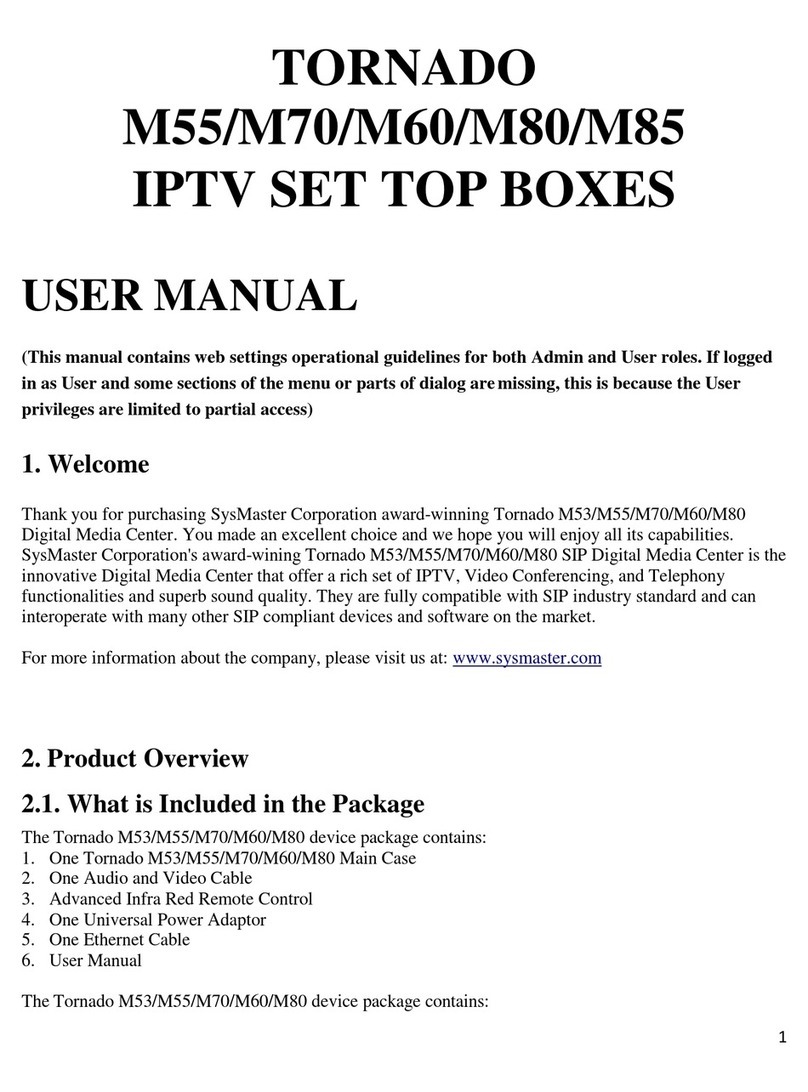
Tornado
Tornado M55 user manual

AMI Entertainment
AMI Entertainment TAP TV Quick install guide

Oakcastle
Oakcastle SB-110 user manual
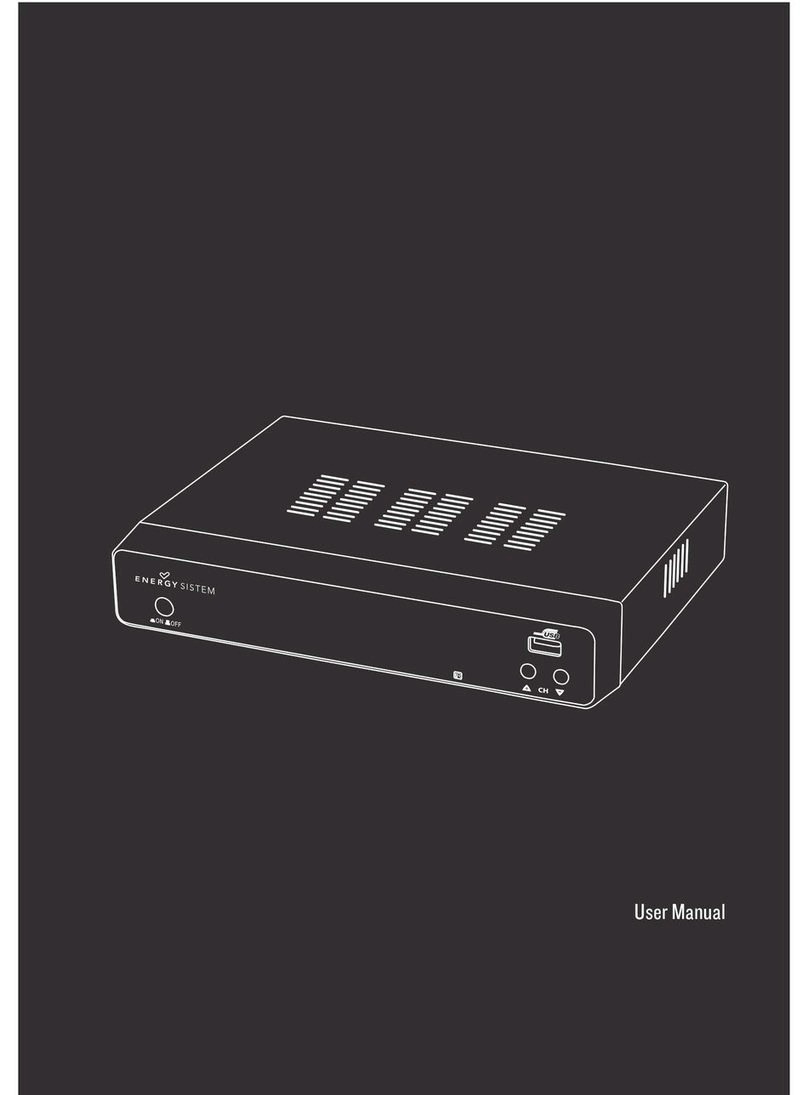
Energy System
Energy System T5250 user manual

Alba
Alba Set Top Box CDVB5 Installation & user's instructions
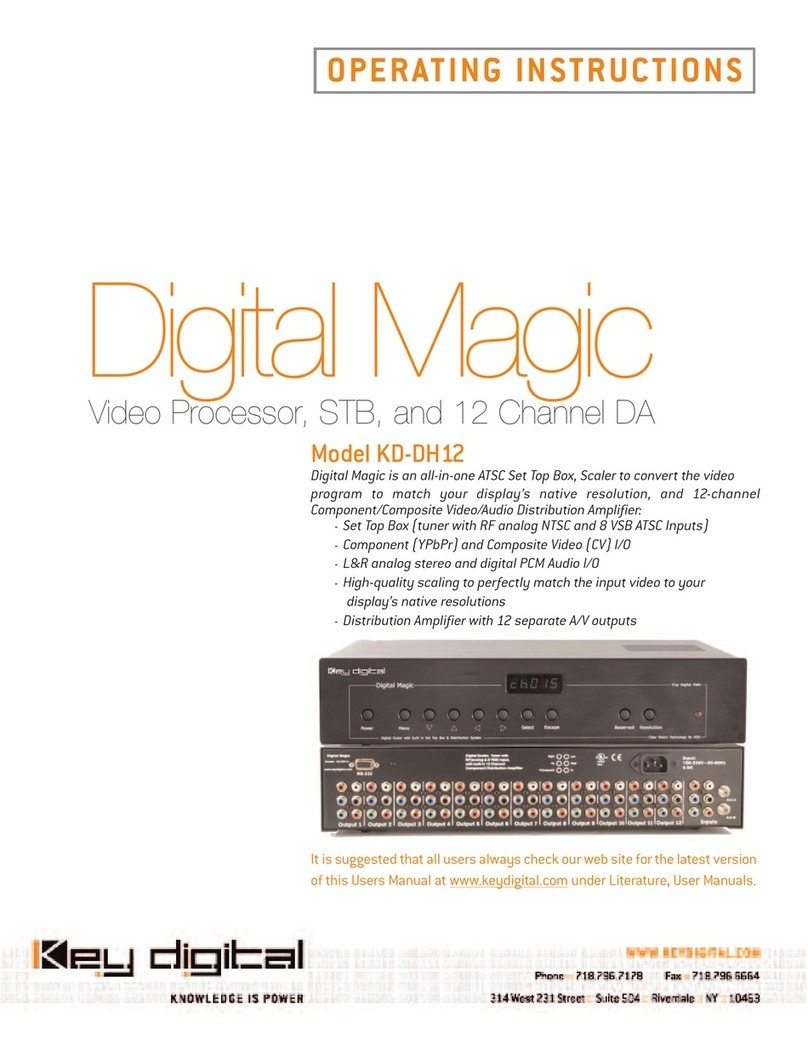
Key Digital
Key Digital Xplosion Series KD-DH12 operating instructions


